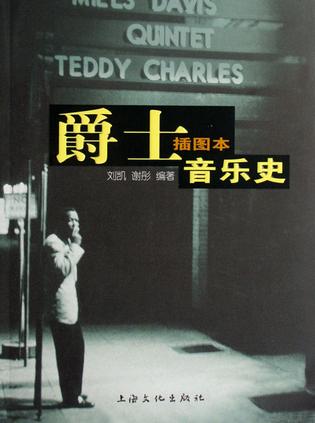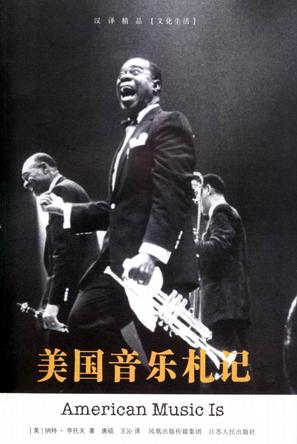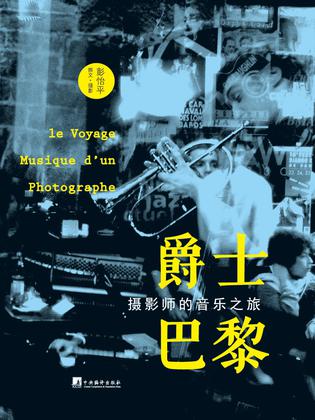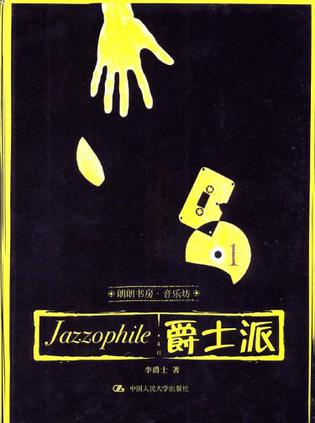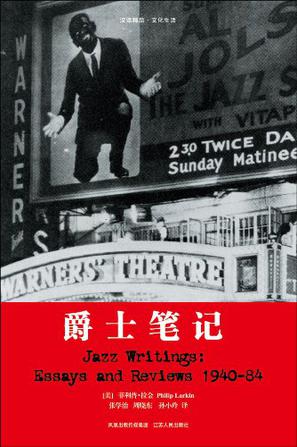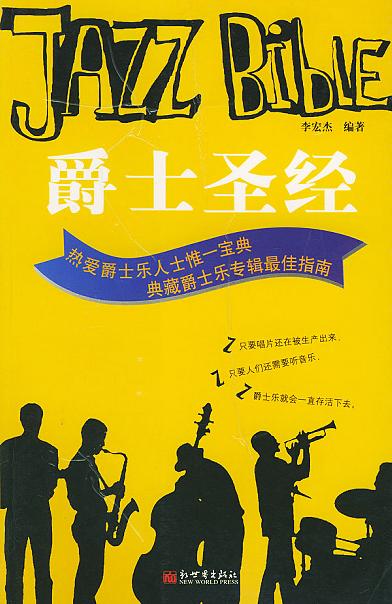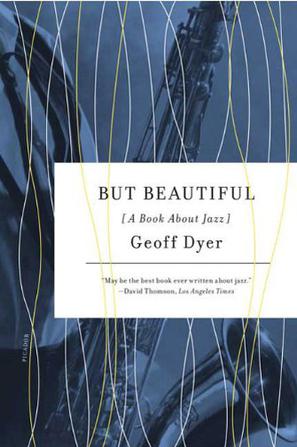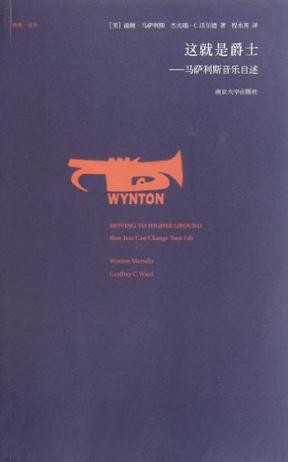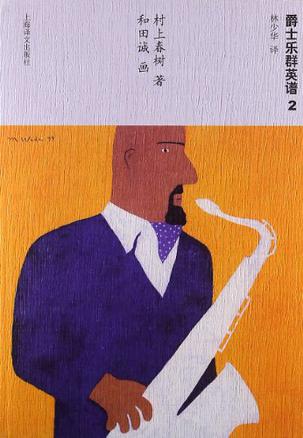欢迎来到相识电子书!
标签:JAZZ
-
绝世爵士
这是一本编年体的爵士乐历史,权威的门派归类,A-Z位大师,和相关影视艺术,从起源与发展讲起,收录流行爵士用语与名牌,无论你是初入爵门,还是老烧友,值得欣赏,值得珍藏。 -
爵士音乐史
作为一本讲述爵士乐历史的书,做到雅俗共赏可能颇为不易,但梳理好它的发展脉络,也是其中应有之义。附录和大量的照片,当也能补坊间同类书籍之不足。毕竟爵士乐是一门听觉艺术,文字往往显得苍白无力,而读者诸君,未必都有去纽约或是蒙特利尔现场聆听一流爵士乐好手演奏的机会,故而照片能提供读者以直观的感受,透过书本看见爵士乐大家的音容笑貌,爵士乐圣地的一草一木;推荐的唱片品牌则利于读者在乐音中重温爵士乐的历史。 这是本雅俗共赏的爵士乐历史书。该书通过大量的照片,梳理了爵士乐的发展脉络。透过本书,我们能看见爵士乐大家的音容笑貌,爵士乐圣地的一草一木。其中推荐的唱片品牌则有利于读者在乐音中重温爵士乐的历史。 -
美国音乐札记
本书是美国历史上最杰出的爵士乐评论家纳特·汉托夫关于美国音乐的评论结集。书中收入音乐随笔和评论文章60余篇,跨越爵士乐、布鲁斯音乐、乡村音乐、福音音乐、美国民间音乐,所评述的对象包括美国家喻户晓的音乐家比莉·荷乐黛、艾灵顿公爵、乔·威廉姆斯、多克·波穆斯、威利·纳尔逊等。纳特·亨托夫通晓古典音乐和爵士乐,既是卓越的评论家,又是许多著名音乐家的朋友,因此他的评论既贴切又生动,充满深情,写作风格既古典又现代,自成一家。 -
爵士乐简明史
本书是国内第一部全面完整地介绍爵士乐音乐史的大众读物,作者以宽广而独特的历史视角,不落窠臼地把爵士乐产生发展的过程置于风起云涌的时代背景中加以叙述,贯穿了爵士乐起源直至20世纪90年代近一个世纪的兴衰起落。在介绍新奥尔良传统爵士乐(New Orleans Traditional Jazz)、遥摆乐(Swing)、咆哮乐(Bebop or Bop)、酷派爵士乐(Cool Jazz)、自由爵士乐(Free Jazz)等爵士乐流派内部衍化与推进及相关的乐手、代表音乐的同时,全书将爵士乐放在非洲―美洲艺术参照系上,在各种音乐形式融合的“交流史”中做深层性的考察,从而全面而集中地展现了爵士乐这种独特音乐形态的“成长史”与“衍化史”。其所涵盖的信息之广,所涉及的人物之众,足以让读者摆脱时间的羁绊,走进这门具有百年历史古老而恒新的艺术,去感情其深邃广博的内涵。 -
爵士巴黎
本书以旅法多年的作家、摄影师彭怡平特有的视角,图文并茂地介绍了法国具有代表性的爵士俱乐部,鲜活地重现爵士年代里的人物和趣事。书中描述的不全然是伟大的音乐家,也不以艰涩的学术字眼或以几颗星评鉴的方式来论断音乐的优势,而是通过对热爱爵士的人士、各种类型风格爵士俱乐部的描绘,进入探讨美国爵士狂潮在席卷法国以后所产生的深远影响。 -
爵士春秋
孙秀蕙的文字有股奇异的魅力,能引领读者的五官和思绪去旅行。旅途中,音乐不只是扬声器那一端的声响,而是镶嵌在生活里的元素。日子,总是那么过着;音乐,也就这么活了。“文学”与“电影”的神出鬼没成了《爵士春秋》极为耀眼的部分,把听音乐的格局放大,爵士乐不再只是都会男女欲赋新辞强说悉的图腾,让人耳目一新。 -
爵士派
爵士乐根本不是小资,不是布波族,不是高雅之声,爵士乐是被压抑的底层之音,是黑人沉重的呼吸,是我们忽视的意外,而真正的爵士乐就是这样通过李爵士来到了你我的面前。“你的身影比来粒还小/而我也许已经消失/正迈出这艰难的一步……”真相和事实就在眼前。 李伟,笔名李爵土,生于宁夏银川,从摇滚皈依爵士的虔诚的“爵士主义”者,有数年爵士乐的欣赏经验。擅长绘画的他,还将音乐的世界表现在二维空间的色彩里。 一辑全面精深的爵士乐评 一份历时五年的聆听经验 一打音乐流淌的喜怒哀乐 一片信马由缰的恣意涂抹 -
爵士笔记
《爵士笔记》收入了20世纪英国著名诗人(此处原书介绍误为美国诗人)菲利普·拉金的一些爵士乐笔记和评论。作为最重要的英语诗人之一的拉金,同时也是一位忠诚的爵士乐迷。20世纪六七十年代,他为各大报刊撰写了一系列堪称有史以来最优秀的爵士乐随笔。这些文章睿智优美,反映出拉金精湛锐利的文笔、对爵士乐的博学和热爱,以及他充满人文魅力的博大胸怀。本书的出版,成为拉金全集的一个重要补充,也有助于人们更深入地了解这位诗人。 -
But Beautiful
http://www.complete-review.com/reviews/dyerg/butbeaut.htm The complete review's Review: But Beautiful is a paean to jazz, a study and homage in fictional form. Dedicated to his mentor, John Berger, Dyer follows in the master's footsteps in looking for novel approaches to presenting a literary work. In his preface Dyer states: When I began writing this book I was unsure of the form it should take. This was a great advantage since it meant I had to improvise and so, from the start, the writing was animated by the defining characteristic of its subject. The words are somewhat disingenuous; But Beautiful is a carefully constructed book, almost conventional as a piece of fiction. Dyer's statement is not meant to point to the fortuitous improvisational bent of the writing: he is emphasizing the form, wanting to make sure the reader does not dismiss the book as mere fiction. Dyer also claims in his preface: "Before long I found I had moved away from anything like conventional criticism." It is a subtle trick, to get the reader to pay closer heed to the book and not treat it as some simple jazz-story collection. Because there is no reason, in picking up the book, to believe that it is criticism, conventional or otherwise -- unless someone makes that claim for it. As its author does. Planting the seed he explains his method (with justifications such as: "since even the briefest simile introduces a hint of the fictive"), defining his book then as "as much imaginative criticism as fiction." (His italics.) All fiction is imaginative criticism (though most of it, like most criticism, is also superficial, beside the point, and unremarkable), but in emphasizing the point Dyer wants the reader to look at his book through different eyes. Mentor Berger did so well on occasion (and less well on others) -- though, generally, without thrusting the issue so directly in the reader's face. Young Dyer, perhaps still unsure of himself, wants to make sure that the reader gets what the author is after. Perhaps he is correct that the reader needs to be hit over the head to realize what is going on; more likely the reader will fail to understand regardless. An afterword "picks up and expands some of the concerns of the main body of the text in a more formal style of exposition and analysis." Here is a straightforward, very conventional piece of criticism, useful but dry (in comparison with the preceding fanciful fiction), and Dyer carefully distances it from the body of the text. "(I)t is supplementary rather than integral to it." Fair enough, perhaps, though it begs the question why the critical aspect could not, in fact, be integrated in the body of the text, or presented in a manner that did make it integral to it. These are quibbles, but Dyer is correct in thinking that form matters and thus form must be considered when considering the text. Dyer plays some neat tricks, but he does not live up to his stated claims. That said it must be emphasized that But Beautiful is both a very good and a remarkable book. It tells the stories of many of the jazz greats, chapters (generally dark chapters) from their lives that sum them up. Separating the chapters is the one thread through the book, vignettes of a car trip by Duke Ellington and Harry Carney. The book, based firmly on fact (most of the events described are based on actual events), is entirely fictional -- in that uneasy modern balance of fact and fiction. Dyer writes exceptionally well, only rarely trying too hard. The improvisational character of jazz can not be captured on the page: writing is fixed and inflexible once set down, jazz is essentially of the moment and, even more than most music, ever-changing. Dyer's writing does create the illusion of conjuring up the smoky world of jazz, though, in fact, the book is very carefully written -- and, in most respects, respectfully traditional. Dyer captures the sad stories of these jazz greats in the relatively short episodes he recounts, managing to make each story different and in its own way remarkable. All the men Dyer writes about -- they include Chet Baker, Lester Young, Art Pepper, Charles Mingus, and Bud Powell -- are obsessed with jazz. It is all they can do or want to do, and they find it difficult otherwise living in the world around them. Dyer romanticizes the figures, seeing something noble in their madness and sadness. They exert a certain fascination, so far removed from the world at large and yet so supremely talented in one area. Several of the stories show the tragedy of their fate when it is no longer possible for them to make music. All of them are at sea, practically their only talent being jazz. Dyer's portraits are very accomplished, reducing much of the essence of these complex lives to a few pages. Certainly this is how most people would like to see these jazz greats, all melancholy, drug-addled, perpetually drifting, and certainly these are good stories. Dyer also suggests the various mens' places in jazz history, who influenced them and who they influenced in turn, and what their music might have meant to them. All well and good -- it is very well done and astonishingly good -- but what Dyer does here can not be overlooked: fact is fictionalized to (so the author) critical ends. Any fictionalization of fact is naturally a critical reading of those facts, but most writers do not emphasize that aspect of their fiction. Dyer does. Aesthetically accomplished, Dyer can seduce with his fiction, colouring fact. This truly is a book that presents the jazz masters as people like to think of them. As a product of a writer's imagination, even if based in fact, it should not be confused with fact. Naturally it will be. Arguably myth long ago replaced fact regarding the jazz world -- but Dyer stokes the fires of the myths. Perhaps this is what writers are meant to do. Were it merely presented as fiction we would mind less (though the difference would be merely semantic), but Dyer goes out of his way to claim this as a work of criticism. A dangerous step, a further blurring of already indistinct lines ? At least something to keep in mind. But Beautiful is an exceptionally good read, an enjoyable book even for those who do not appreciate jazz. It is also an interesting book -- as a book about jazz, and for what it tries to do with the fictional form (an aspect that great attention should be paid to). Highly recommended. -
Tender Is the Night
In "Tender is the Night", Fitzgerald distilled much of his tempestuous life with his wife Zelda, and the knowledge of the wrecked, fabulous Fitzgeralds adds poignancy and regret to this tender, supple and poetic portrait. To the just-fashionable French Riviera come Dick and Nicole Diver - handsome, rich, glamorous and enormous fun. Their dinners are legend, their atmosphere magnetic, their intelligence fine. But something is wrong. Nicole has a secret and Dick a weakness. Together they head towards the rocks on which their lives crash - and only one of them really survives. -
这就是爵士
本书是美国著名爵士乐大师温顿•马萨利斯撰写的带有自传性质的爵士乐评论。大师在回顾自己的音乐生涯中,探究了人们应该如何理解爵士乐,而爵士乐的语言、形式又是如何引导人们以更为深邃、纯粹的方式来生活和维系与他人、社团以及民族之间的关系。马萨利斯告诉我们要怎样聆听爵士乐,也与我们一同分享了他的人生经历以及从别的音乐大师那学到的宝贵经验。作为一门艺术,爵士乐以它特有的途径带领人们和整个美利坚民族行至更高处,这是本书意欲揭示的核心,也是这本独一无二的音乐评论鼓舞人心、富有启迪性的价值所在。 -
左岸香頌 DANS MON ILE
专辑曲目: 01 C'Est Si Bon 如此美好 02 Rever... 作夢 03 Les Feuilles Mortes 枯葉 04 Les Parapluies De Cherbourg 天生一對 05 J' Ai Vu 我見過 06 Salade De Fruits 水果沙拉 07 Watch What Happens 看看會發生什麼 08 Elle, Lui, Nous... 她, 他, 我們 09 Dans Mon Ile 在我的小島 10 Pour Toi 給你 11 La Vie En Rose 玫瑰人生 12 Derniere Valse 最後的華雨滋 -
爵士乐群英谱 2
《爵士乐群英谱2》内容简介:村上春树的彩图传记集,内容为二十六名当代美国爵士乐手的小型传记,以及村上对他们的音乐的感悟。每个传记都配有画家和田诚所作的爵士乐手画像,和爵士乐手的成名唱片封套照片。 -
爵士乐群英谱
村上春树与和田诚都是超级爵士乐迷。在这本《爵士乐群英谱》中,两人让26位当代美国爵士乐好手得以聚首于一册群英谱之上。和田诚的26幅画优雅浑成,大巧若拙,村上的文字亦是精彩绝艳。 -
爵士乐
为了逃避贫穷和暴力,黑人乔与妻子维奥莉特从南方乡下来到大都会谋生。二十年后,两人的爱情和梦想都已在都会中迷失。苦闷的乔爱上了十八岁的女孩多卡斯。同样有着不幸童年经历的两人,在彼此身上找到了慰籍和满足。当发现多卡斯跟其他男孩交往时,乔开枪打死了她……维奥莱特出现在葬礼上,企图痛打棺材里的多卡斯,被人赶出。乔整日消沉,维奥莱特为了挽回丈夫的心,试着去打听多卡斯的一切,但无济于事。在绝望的孤寂中,维奥莱特回忆当年与乔的相识、自己家族的历史;乔也在回忆自己的从前,回忆自己的母亲——一个精神错乱的野女人,回忆他一生的七次改变……全书漾溢爵士的基调和酸楚的乐观…… 《爵士乐》是托妮·莫里森目前为止最后一部长篇小说,也是标志着她的作品提高到一个新的水平的里程碑。小说中主要人物的心路历程、南北战争以来半个世纪美国黑人的历史变迁,均通过一个生生死死的爱情故事得以展现。作品引入爵士音乐技法,叙述手法多变,时空跳跃转换,情节迂回交错,代表了莫里森的独特创作风格。 《爵士乐》是托妮·莫里森继《宠儿》之后,再一次将笔触伸向历史背景之中的美国黑人精神内核的爱情故事,《世界》杂志赞誉这部小说为:“吟唱布鲁斯的莎士比亚!”小说借鉴爵士乐即兴演奏式的方式叙述,推动故事的进展,令读者犹如置身于上个世纪20年代纽约哈莱姆爵士乐师即兴演奏的旋律之中。这部后现代主义的杰作,已成为美国文学史上的不朽名篇。
热门标签
下载排行榜
- 1 梦的解析:最佳译本
- 2 李鸿章全传
- 3 淡定的智慧
- 4 心理操控术
- 5 哈佛口才课
- 6 俗世奇人
- 7 日瓦戈医生
- 8 笑死你的逻辑学
- 9 历史老师没教过的历史
- 10 1分钟和陌生人成为朋友


